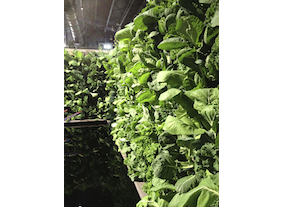+86- 111****
Boluo county dragon Lotus Lake Village Town Industrial Park, China

The idea of having a living plant wall that is covered with mosses and lush ferns has become quite the trend.
And for several reasons other than just trendy fashion:
• Green walls “breathe” oxygen into the air that we humans can benefit from.
• Some living materials planted onto walls can remove volatile organic compounds (VOCs)
• The three-dimensional lushness of a living wall can put people into a better mood.
That last reason is my own that I threw in there, but I’m pretty sure there must be some psychological study to back me up. It’s sure enough a big improvement over a brick wall or chain link fence.
Veggies can stake a claim to living walls, too.
And why not? We already train peas, beans, and squashes to grow up, saving us room on the ground. And there’s the upside-down tomato we’ve all seen or even grown ourselves. Taking your veggie and herb crops to the wall is the next step.
I spotted this green wall planted with veggies in the Brassica family—collards? kale?— at the 2013 Philadelphia Flower Show. Peeking behind the canopy of leaves, it looks like a wall of slats was loosely lined with a black landscape fabric. The openings between each slat, where the fabric was loose, was filled with soil, and the plants were inserted into this soil. The plants were supported somewhat vertically by bamboo garden stakes, also inserted into the soil.
Another idea is to attach discarded wooden pallets—ones used for shipping stacks of boxes or bales of peat moss—to a wall or fence, line the inside with landscape fabric, fill with potting soil, and plant vegetables into slits cut into the exposed fabric. Not as complicated as it sounds.
Whether you use the wall of slats or pallets, or another vertical garden device, keep in mind that this method of growing will require a close eye on water.
Water does, after all, flow downward. Consider setting up an automated irrigation system consisting of a series of tubes weaving back and forth and down the wall. This can be set to turn on and off automatically, and at greater frequency as the vegetables get bigger and the weather turns warmer.
I suspect a vertical vegetable wall would also incur fewer weeds, and then there’s the benefit of not having to bend over all the way to the ground. Depending on where you position it, its most valuable aspect may be creating a privacy wall between you and your neighbor.
Now, that’s a great idea.